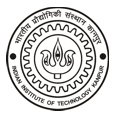Dr. Ashish Dutta
Indian Institute of Technology

Indian Institute of Technology

|
||||||||||||
Design of an optimal |
Outline:
Objective : understanding synergy between: hand kinematics - muscles - brain.
§ Human finger motion biomechanics.
§ Optimal design of a hand exoskeleton.
§ Hybrid control (EEG+EMG+Dynamics)
Finger biomechanics:
•How do humans perform simple object manipulation (rotation + translation) ?
|
Simple task of moving a coin and its motion analysis(NAIST Japan):
- 30 subjects performed this task.
|
Axes notation for each joint:
|
Manipulability calculation based on joint positions: |
Ellipsoid calculations:
•Activity of each finger : •Ellipsoid volume •Direction of major axis of ellipsoid •Ratio of axes |
Rotations and 3D motion:
|
Design of finger exoskeleton:
•Three finger exoskeleton (index-middle-thumb). •Grasping and simple manipulation ability. •Control using EMG / EEG, Inverse kinematics. •Use in stroke rehabilitation, assistive robot, physical therapy.
|
Thumb and middle finger: |
Links made by rapid prototyping and actuated by ultrasonic motors:
|
Fabrication of the exoskeleton: Rapid prototyping:
|
Three finger exoskeleton for exact finger motion emulation:
- 10 DOF actuated by ultrasonic motors. - Both translations and rotations are possible. - Control : NN and Inverse Kinematics
|
New 4 DOF Two finger exoskeleton for Stroke Rehabilitation
Hybrid control:
|
Augment EMG with EEG for Control
Flow chart of the control strategy: EMG + EEG signal recording - Feature extraction and classification - control of joint motors.
|